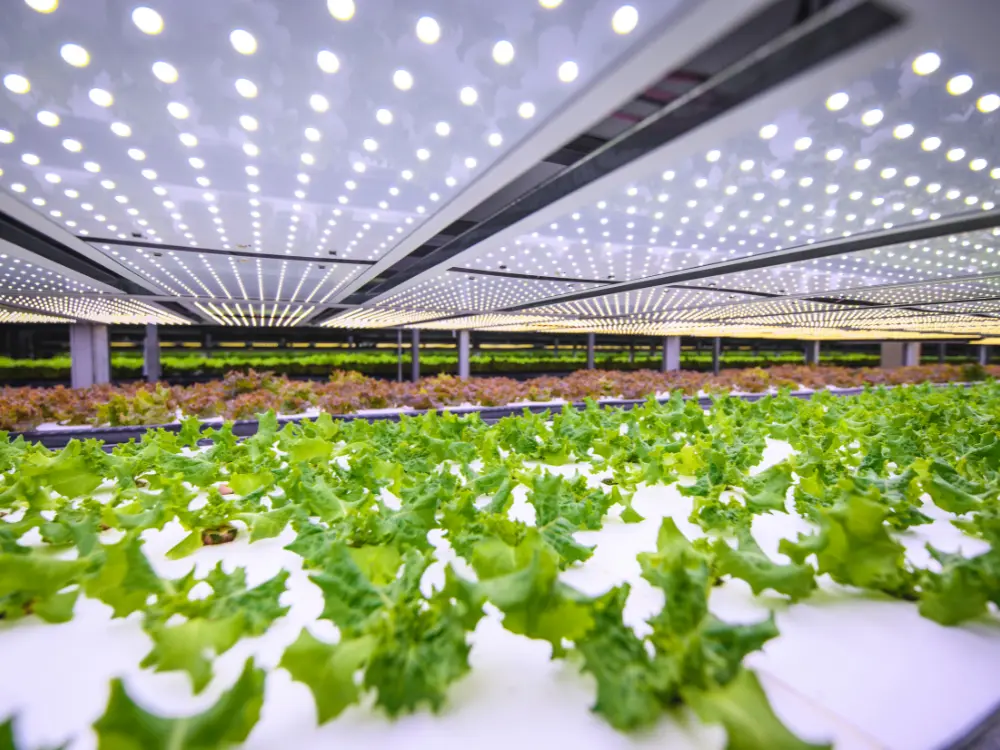Agriculture has always been a vital part of India’s economy and culture, providing livelihoods for millions of people. However, the traditional methods of farming are facing unprecedented challenges due to climate change, population growth, and dwindling natural resources. To overcome these hurdles and ensure sustainable food production, the integration of Artificial Intelligence (AI) and agritech is emerging as a game-changer. These technologies are not just enhancing productivity but are also transforming the very nature of farming. Let’s explore how AI and agritech are shaping the future of farming in India.
The Role of AI in Agriculture
Artificial Intelligence, with its ability to process vast amounts of data and make predictions, is being increasingly applied to various aspects of agriculture. From predicting weather patterns to optimizing resource use, AI is enabling farmers to make more informed decisions, thereby increasing efficiency and reducing waste.
1. Predictive Analytics
One of the most significant applications of AI in agriculture is predictive analytics. AI algorithms can analyze historical data, weather patterns, soil conditions, and crop performance to predict future outcomes. For instance, AI can forecast the best time to plant crops, the likelihood of pest infestations, or the expected yield of a particular field. This helps farmers plan their activities better and take preventive measures to avoid potential problems.
Example in India: In Karnataka, AI-based platforms are being used to predict the optimal sowing time for crops like maize and cotton, helping farmers achieve better yields and reduce crop failure risks.
2. Precision Farming
Precision farming, powered by AI, allows farmers to monitor and manage their fields with unprecedented accuracy. By using data from sensors, drones, and satellite imagery, AI systems can identify variations in crop health, soil conditions, and water needs within a single field. This enables farmers to apply inputs like water, fertilizers, and pesticides only where they are needed, reducing waste and improving crop health.
Example in India: In Maharashtra, precision farming techniques are being used in grape farming to monitor soil moisture and nutrient levels, leading to higher quality produce and more efficient resource use.
3. Automated Irrigation Systems
Water management is a critical issue in Indian agriculture, where water scarcity is a growing concern. AI-powered automated irrigation systems use sensors to monitor soil moisture and weather conditions in real-time. These systems can then adjust irrigation schedules to ensure that crops receive the right amount of water at the right time, conserving water and improving crop yields.
Example in India: In Tamil Nadu, AI-driven irrigation systems are being adopted in paddy fields, where efficient water use is crucial. These systems have helped farmers save water and reduce irrigation costs while maintaining healthy crops.
4. Pest and Disease Management
AI is also making significant strides in pest and disease management. By analyzing images of crops and using machine learning algorithms, AI systems can detect early signs of pest infestations or diseases. This allows farmers to take timely action, such as applying targeted treatments, before the problem spreads. Early detection and intervention not only save crops but also reduce the need for chemical pesticides, promoting more sustainable farming practices.
Example in India: In Andhra Pradesh, AI-powered apps are being used by cotton farmers to identify and manage pest infestations. Farmers can take pictures of affected plants, and the app provides instant diagnoses and treatment recommendations.
5. Market Insights and Price Forecasting
AI is helping farmers navigate the complexities of agricultural markets by providing insights into price trends and demand forecasts. By analyzing market data, AI systems can predict the best time to sell produce, helping farmers get better prices for their crops. Additionally, some AI platforms connect farmers directly with buyers, reducing the influence of middlemen and ensuring fairer prices.
Example in India: In states like Punjab and Haryana, AI-based platforms are helping farmers track market prices and find the best buyers for their wheat and rice crops, leading to better income and reduced post-harvest losses.
The Role of Agritech in Farming
While AI is the brain behind many modern farming solutions, agritech encompasses a broader range of technologies that are transforming agriculture. These include advancements in machinery, biotechnology, and digital platforms that support every stage of the farming process, from planting to marketing.
1. Drones and Aerial Imaging
Drones have become an essential tool in modern agriculture, providing farmers with a bird’s-eye view of their fields. Equipped with high-resolution cameras and sensors, drones can capture detailed images of crops, soil conditions, and irrigation patterns. This data helps farmers monitor crop health, identify problem areas, and plan interventions more effectively.
Example in India: In Punjab, drones are being used in wheat and rice fields to monitor crop growth and assess the effectiveness of irrigation and fertilization practices, leading to more efficient farm management.
2. Biotechnology
Biotechnology is playing a crucial role in developing crop varieties that are more resistant to pests, diseases, and extreme weather conditions. Genetically modified crops and bio-engineered seeds are helping farmers achieve higher yields with fewer inputs, making agriculture more sustainable and resilient to climate change.
Example in India: Bt cotton, a genetically modified crop, has been widely adopted in India and has significantly reduced the need for chemical pesticides, leading to lower production costs and increased farmer incomes.
3. Digital Platforms and Mobile Apps
Digital platforms and mobile apps are connecting farmers with vital information and resources. These tools provide weather forecasts, market prices, farming tips, and access to government schemes, all at the fingertips of farmers. By making information more accessible, digital platforms are empowering farmers to make better decisions and improve their livelihoods.
Example in India: The government’s eNAM (National Agriculture Market) platform is an online trading portal that allows farmers to sell their produce directly to buyers across India, ensuring better prices and reducing the role of middlemen.
4. Automation and Robotics
Automation and robotics are gradually making their way into Indian agriculture, helping to reduce labor costs and increase efficiency. From automated harvesters to robotic weeders, these machines are performing tasks that were once labor-intensive, allowing farmers to focus on more strategic aspects of farming.
Example in India: In states like Karnataka, automated milking machines are being used in dairy farming to increase efficiency and reduce the reliance on manual labor.
Why Integrating AI and Agritech Matters
The integration of AI and agritech is not just about adopting new tools; it’s about transforming the way farming is done. This integration offers several key benefits:
1. Increased Productivity: By optimizing resource use and improving decision-making, AI and agritech help farmers achieve higher yields and better-quality produce.
2. Sustainability: These technologies promote more sustainable farming practices by reducing the overuse of water, fertilizers, and pesticides, and by enhancing soil health and biodiversity.
3. Resilience to Climate Change: AI and agritech provide farmers with the tools they need to adapt to changing climate conditions, ensuring that they can continue to produce food in the face of environmental challenges.
4. Economic Empowerment: By providing better market insights and connecting farmers with buyers, these technologies help farmers secure better prices for their produce, improving their incomes and livelihoods.
Challenges and the Way Forward
While the potential of AI and agritech is immense, there are challenges to their widespread adoption in India. These include the high cost of technology, lack of digital literacy, and limited access to infrastructure in rural areas. However, with government support, private sector investment, and collaborative efforts between stakeholders, these challenges can be overcome.
Conclusion
The future of farming in India lies in the integration of AI and agritech. These technologies are not just enhancing productivity but are also paving the way for a more sustainable, resilient, and prosperous agricultural sector. As more farmers embrace these innovations, India can ensure food security for its growing population while protecting the environment and improving the livelihoods of millions of farmers. The journey may be challenging, but the rewards are well worth the effort.

